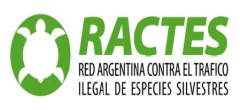Macho B., thought to be the last wild jaguar in the US, died Monday in Arizona. The 118-pound animal was 16 years old and had been fairly recently collared by researchers. In the middle of February, he was accidentally captured in an Arizona Game and Fish Department trap. After discovering that he was suffering from irreparable kidney failure, wildlife authorities euthanized Macho.
Whether Macho's capture and collaring contributed to his death or whether his illness was due to age will be known soon enough. Either way, the loss of this big cat is a tragedy for all of us.
I am privileged to work with some very gifted field biologists and I know that scientists do not tag and collar animals frivolously. Such actions are usually done so that we can better learn how to help species survive. Sometimes it's just too late, there aren't enough animals left, extinction is certain, and all we can do is learn what not to do next time. I have a friend who spends a great portion of his time studying a single species of toad, the last few of which survive in only one or two places in Texas. Pollution and development have slowly killed off, will soon completely extirpate, this species. Unfortunately, others will soon follow. Because of the their complex respiratory systems, amphibians are, as described by the overused but accurate phrase, canaries in our coal mine. The state of amphibians is a living, actually dying, picture of our air quality. And it's not good, not at all good, that so many of them are disappearing right under our noses. Not just within our lifetime but within this decade.
I think about my friend and his toads, and the other good folks I know studying other wild animals and the environment, every single time I hear the bullshit, anti-science, conservative screed about liberals wanting to spend millions to fund someone doing something with some animal, the "how much does it cost to control a beaver anyway?" crap. Some of the scientists studying Macho B the jaguar, and now grieving his death, had been doing so for their entire careers. How do we quantify this work, how do we count the money spent versus the death of a species and its impact on our culture and our ecosystem?
Compare this also to the billions being spent on that destructive boondoggle, the Border Wall, still being built on our new president's watch. Whatever the toxicologists discover in Macho's post-mortem, we know that his territory was bisected by that goddamned wall. We know that the wall is having devastating effects on the jaguar and ocelots, on the antelopes, javelinas, deer and mountain lions trying to survive along the US/Mexico borderlands, not to mention, of course, the humans struggling to carry on with their own lives.
We know that back in 2008, when Congress gave DHS Secretary Chertoff authority to waive all legal requirements necessary to expeditiously install additional barriers and roads at the border "to deter illegal activity," they pretty much signed off on Macho's death warrant.
"The department remains deeply committed to environmental responsibility, and will continue to work closely with the Department of Interior and other federal and state resources management agencies to ensure impacts to the environment, wildlife, and cultural and historic artifacts are analyzed and minimized," said Chertoff.
And of course, the Department of the Interior, the agency tasked with protecting our wildlands, went right along.
The DOI has a legal obligation to manage and oversee Interior lands consistent with laws such as the Wilderness Act and the National Wildlife Refuge System Administration Act, and the agency said in a statement Tuesday that it cannot approve the border fences and walls and still obey these laws.
As a result, the DOI said it sees the need for the waivers.
"We will continue to work with them closely to protect environmental values and mitigate impacts," the DOI said. "Among other actions, we look forward to finalizing an agreement with DHS that documents their commitment to fund mitigation projects for threatened and endangered species valued up to $50 million.
The photo below is Macho B back in 2006. This was before the collar, before the wall. This was the last living wild jaguar in the country.
Put a price tag on this, Senators. Mitigate this, sirs.
Fuente: http://www.first-draft.com/2009/03/leave-only-footprints.html





No hay comentarios:
Publicar un comentario